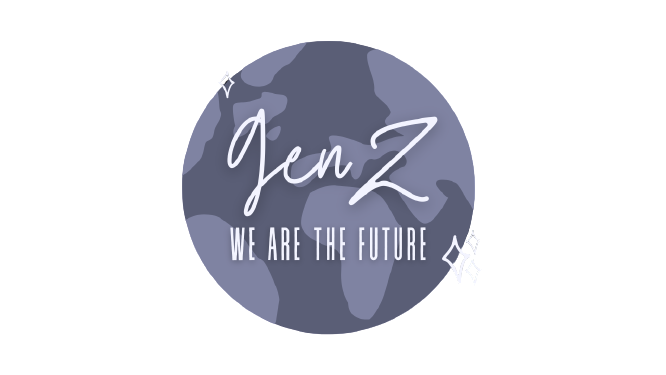Zoom Fatigue
The past year has felt like a lifetime full of novel phenomena. From the institution of lockdown protocols to the whole shebang with online school, it’s no secret that each and every one of us have undergone a plethora of changes in a short amount of time. With the insane number of Zoom calls packed into a day, I’m sure we’ve all experienced an unnatural amount of fatigue, be it at the end of the day, between video conferencing calls, or simply our mind wandering off during meetings. This phenomenon has been informally termed “Zoom fatigue.” Just as it sounds, Zoom fatigue is an entirely new concept that has arisen with the enormous transition to virtual means. Here, we’ll be breaking down exactly what the term constitutes of, as well as what we can all do to help overcome it, in our own ways.
The Phenomenon Itself
Just as how “Googling” is synonymous with a web search, the term “Zoom” has become the generic term for a video call of any kind. And so follows the name of the phenomenon of “Zoom fatigue.” In spite of social distancing and quarantine protocols maintaining social bounds, millions have utilized other methods to salvage social interaction. Virtual meetings and video conferencing calls have skyrocketed in number, as much of the world relies on technology to preserve a sense of normalcy.
Though not a formal diagnosis, Zoom fatigue is an incredibly real phenomenon due to excessive time on video conferencing calls. The term itself refers to the physical and mental toll as a result of constant virtual meetings; it essentially comes down to the “increased cognitive demands of video conferencing communication. Though it is termed “Zoom” fatigue, it can be brought about by any video conferencing platform, such as Google Hangouts, Google Meet, Skype, Microsoft Teams, GoToMeeting, FaceTime, BlueJeans, Slack, and Houseparty.
Symptoms and Signs
Zoom fatigue consists of anything from a general feeling of exhaustion, to specific parts of one’s physical, emotional, social, or motivational health. In general, however, the signs of Zoom fatigue are classified in these four categories:
Forgetfulness and difficulty concentrating
Difficulty maintaining relationships and being present with loved ones
Frustration and irritability with co-workers
Physical symptoms, like muscle tension, pain, fatigue, and insomnia
Out of the many symptoms, below is a consolidated list:
Feeling tired between calls
Feeling more tired at the end of the workday than usual
Finding your mind wandering instead of paying attention to your meeting
Overeating
Feeling sweaty or fidgeting during your calls
Eye strain or eye irritation that is not preexisting
Regular headaches
Constant feelings of exhaustion
The anxiety of having to turn on your camera
The Causes (as described by Stanford)
1. Excessive amounts of close-up eye contact is highly intense.
The amount of eye contact that we engage in through virtual meetings, as well as the size of the faces on our screens, is simply unnatural. In in-person meetings, people may be occasionally looking at the speaker, taking notes, or focused elsewhere. However, as contrasted by virtual meetings, a listener is treated nonverbally as a speaker, meaning that even if one does not speak, there are still faces looking at you. In general, the amount of eye contact is dramatically increased.
In addition, faces on teleconferencing calls can appear too large for comfort. When another person’s face is that close with in-person interaction, our brains interpret it as an intense or extreme situation.
2. Seeing yourself during video chats constantly in real-time is fatiguing.
Constantly seeing a reflection of ourselves on video conferencing platforms renders us more critical to ourselves. “It’s taxing on us. It’s stressful. And there’s lots of research showing that there are negative emotional consequences to seeing yourself in a mirror.”
3. Video chats dramatically reduce our usual mobility.
In-person and audio conversations normally allow us to walk around and move while conversing. With video conferencing, on the other hand, most cameras are set with a field of view, meaning that one usually has to stay in the same position; movement is limited in ways that are not natural to us. “There’s a growing research now that says when people are moving, they’re performing better cognitively.”
4. The cognitive load is much higher in video chats.
In normal face-to-face interaction, nonverbal communication is natural in how we each make and interpret gestures and nonverbal cues subconsciously. In video conferencing, however, we must work harder to send and receive signals.
Solutions
Give yourself “audio only” breaks!
Be sure to take breaks, not just by turning your camera off, but also by turning your body away from the screen.
2. Feel okay to “tap out.”
It’s never possible to attend every single meeting; cut yourself some slack if you are not able to attend certain meetings! Take that time to unwind and take a break from the screen.
3. Adjust your computer settings to minimize screen options.
This way, faces seem smaller on your screen — yours included. Certain platforms also have a “hide self” feature; if hiding your self camera aids you in keeping focused, try it out!
4. Use email or chat messages for information transfer.
Not all tasks require meetings; cut down your meetings when you can if you can resolve it with an email exchange. This reserves your video calls for meetings that necessitate collaboration.
SOURCES:
[1] https://news.stanford.edu/2021/02/23/four-causes-zoom-fatigue-solutions/. By Stanford.
[2] https://www.healthline.com/health/zoom-fatigue. By HealthLine.
[3] Do you have 'Zoom Fatigue'? 7 ways to cope. By NBC News.


